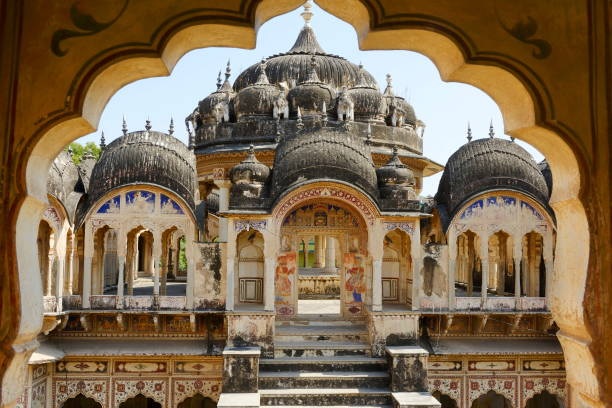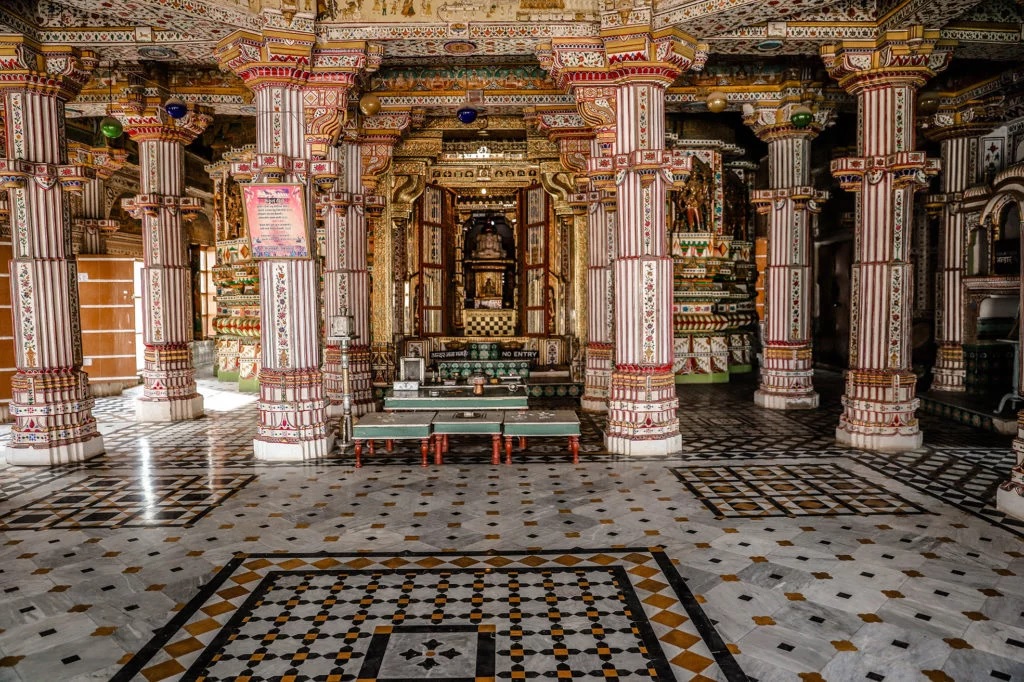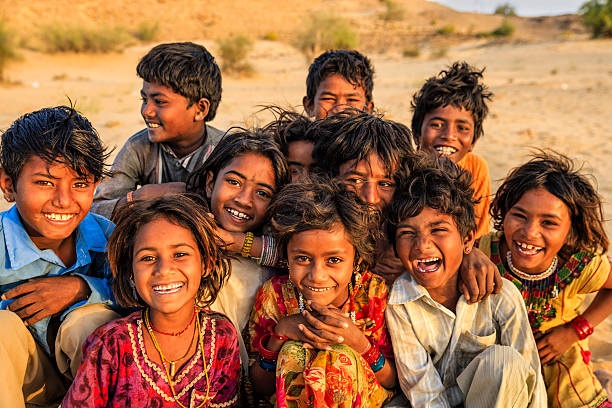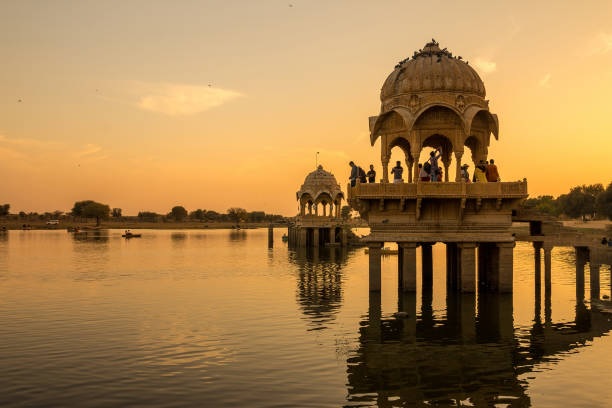
Trek & Bishnoi Village in Rajasthan
A wonderful combination: the discovery of the radiant and precious architecture of the cities of Rajasthan, and the meeting with the precursors of ecology, the Bishnois, during beautiful hikes off the beaten track for a different discovery of Rajasthan… Our first immersion, in the land of lords and cities with dream palaces, takes us back to a glorious past of which the Rajputs still draw their pride today. Then, by winning, the Shekhawti, with its grassy steppes and sand dunes, in the Thar desert, we savor a scent of suspended time. The small towns carry the history of the rich merchants who had their houses called Haveli artistically decorated with large frescoes. In the alleys of the bazaars camels cross paths… In the desert, with its scattered habitat and meager crops, the wells serve as a rallying point for the Bishnois, a Vishnuite community whose precepts are that of absolute protection of nature…
Detailed Program :-
Day 1: Arrival in Delhi
Delhi, the city is a mixture of colors, noise, chaos, old and new. A highlight of Old Delhi is the Jama Masjid (mosque), built in red stone, it is the oldest mosque in India. The courtyard of the mosque is 1,000 square meters and can accommodate up to 100,000 people. We will take a tuk-tuk ride through Chandni Chowk and stroll through the spice market. Continue the visit with the Sikh temple locally called Gurudwara Bangla Sahib. This temple is known for its golden dome and its large basin for the ablutions of the faithful. Return to the hotel.
Day 2: Delhi – Agra
After breakfast, discover the modern part of New Delhi: the parliament, the India Gate, the Rajpath and Humayan’s tomb, a precursor building of the Taj Mahal in Agra. In the afternoon, transfer to Agra, a large and modern city, full of hustle and bustle. Agra was once the capital of the Mughals. It is home to many emblematic buildings of the Mughal empire that can be described as architectural wonders.


Day 3: Taj Mahal – Jaipur
Sunrise over the Taj Mahal. Built about 300 years ago, the Taj Majal amazes with its symmetry, elegance and perfect proportions. It took 22 years to build the Taj Mahal, and the effort of 20,000 worker under the orders of Shah Jahan who wanted a building in honor of the love he had for his wife Mumtaz. Return to the hotel for lunch, then we continue the must-see discoveries, with the Red Fort, another major building of the Mughal period. We will leave Agra to go to Fatehpur Sikri. In the afternoon, we will continue our route to Jaipur. Known as the pink city, this city was created in 1727 by one of the greatest Jai leaders, Singh II.


Day 4: Jaipur
We will have a full day in the pink city, Jaipur, to discover the Amber Fort, then the City Palace. The highlight of the visit will undoubtedly be the Palace of the Winds (Hawa Mahal). Built at the end of the 18th century, this five-story building is probably the most emblematic of the city, and finally, free time to stroll through the narrow alleys and lively streets of the old city.


Day 5: Jaipur – Mandawa
Transfer to the small town of Mandawa. En route, we will visit Nawalgarh which is home to some of the most beautiful frescoes in the Shekhawati region of Rajasthan. Places of interest include a huge fort, a colourful bazaar and many havelis (mans’ houses) with elaborate architecture. The main havelis are Anandilal Poddar Haveli, Aath Haveli and Hodh Raj Patodia Haveli, etc. Then, we will continue to Mandawa. The city is mainly known for its spectacular painted houses, with typical decorations. After checking into the hotel, in the late afternoon, we will leave for a guided tour of the most beautiful places in the city.


Day 6: Mandawa – Bikaner
In the morning, we will go to Bikaner which was once an important trading center between Africa, West Asia and the Far East. The richness of its architectural heritage can be observed in its forts, palaces and temples, magnificent creations in red and yellow stones. Like many other cities in Rajasthan, the old city is surrounded by a high crenellated wall, and was once an important stopping point on the great caravan route. Stroll through the narrow streets of the old city to discover superb preserved havelis. These typical Rajasthani houses are decorated with murals. We also discover the sumptuous Junagarh Fort, built in the 16th century. At the end of the day, free time to wander around the city.


Day 7: Bikaner – Thar Desert – Phalodi
Jeep transfer to the village of Deshnok to see a most unusual attraction, the Karni Mata temple is a very popular holy place. The temple is home to about 20,000 rats that are fed, protected and worshipped. To ensure the safety of the sacred rats, fences have been installed above the courtyard. We continue with the jeep through the Thar desert where we will begin our trek between dunes and typical Rajastani villages. An ideal place to observe the life of the Indian desert, culture, wildlife and its beautiful nature. The Great Indian Desert Thar, is a huge expanse of burning sand that stretches over four Indian states, covering a total area of 446,000 km2. This trek will be an opportunity to discover the rural life of the Bishnois and meet them. Their houses are built of dried mud and they have a deep respect for nature (animal and plant), perhaps the first ecologists in history. After the walk, return to Phalodi by jeep.


Day 8: Phalodi – Jaisalmer
After an early breakfast, we leave for Jaisalmer. We will spend a large part of the morning crossing a desert landscape until Jaisalmer appears. We will arrive in the early afternoon. The city, sometimes called the golden city, was created by the Jaisala Rajput chief, from whom it takes its name. Jaisalmer grew rapidly in the medieval period and accumulated a lot of wealth thanks to the caravans that crossed the region. The two routes that linked India to Persia, Africa, Egypt and Western countries passed through this region. Installation at the hotel, and visit of the Gadisagar lake, the museum before leaving for the fort of Jaisalmer. It was built in 1156 by Rajput ruler of Jaisala. About a quarter of the population of the old city lives within the fort. This place has been the scene of many battles.


Day 9: Jaisalmer
In the morning we will visit the Jain temple and three havelis (mansions): Salim ji ki haveli, Nathmal ji ki haveli and the Patwon ki haveli. The Salim Singh ki haveli was built about 300 years ago and is partly occupied. Salim Singh was the Prime Minister when Jaisalmer was the state capital and this mansion has magnificent arched ceilings. Patwoon Ki haveli is one of the largest and most elaborate havelis in Jaisalmer. It is divided into six apartments. Nathmaljiki-Haveli was built by two brothers, Hathi and Lulu who were known for their unique sense of creativity. This haveli is still considered the most successful in Jaisalmer in terms of grandeur and architectural style. After lunch, free time to explore the city at your own pace and according to your interests.


Day 10: Jaisalmer – Thar Desert Trek
Transfer to the village of Parasar, where we begin our walk between the dunes and the Bishnois villages. The Thar Desert is the 9th desert in the world and offers a very rich biodiversity. Reserves within the desert allow the protection of caracals, wild donkeys, Indian bustards etc. Walk off the beaten track, in a non-touristy corner of the desert and meet its inhabitants. At the end of the day, we set up camp or we will spend the night in the heart of the dunes for a unique experience of the sunset in the desert.


Day 11: Thar Desert
The sunrise is just as beautiful a moment to experience in the desert. Continuation of the walk between villages and dunes. Visit of the village of Darjiyon-Ki-Dhani. Lunch in the shade of the trees near an oasis and rest at the hottest hour before taking the path again and leaving our desert management team.
Day 12: Thar Desert – Chandelao
Departure for the plain of Chandelao and to reach a peaceful village of Rajasthan, inhabited by the Bishnois and the Raika. Installation in a charming haveli, a historic hotel. The afternoon will be devoted to the discovery of the village, its inhabitants and its various artisans; potters, blacksmiths, goldsmiths, weavers.


Day 13: Chandelao – Jodpur – Delhi
A short transfer takes us to Jodhpur, called “the blue city” in reference to its houses painted blue in order to protect themselves from the heat and mosquitoes. Discovery of Jodhpur, including its massive fort. This fort almost inaccessible from the outside offers inside, many royal palaces with a fascinating history and priceless jewels, and a magnificent view of the whole city. A short walk along the protective wall of the old city takes us to two small artificial lakes. We continue between the narrow streets where it is not uncommon, at the crossroads of its blue houses, to come across sacred cows and elegant silhouettes in colorful saris, giving the impression of having entered a postcard. The end of the day, free, will allow you to continue the visit at your leisure before boarding the night train to Delhi.


Day 14: Arrival Delhi
Early in the morning, arrival in Delhi and short transfer to the hotel. Free time before the transfer to the airport or night in Delhi and flight the next day.